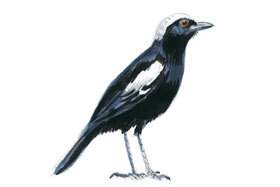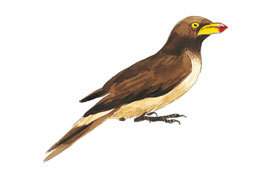
The far north of Kruger is one of the most exciting birding spots in the subcontinent because it straddles the subtropical and tropical bird ranges. It is considered by many to be the crown jewel of Kruger's birding kingdom because of the rich and rare birdlife to be found in its diverse habitats. There is a catch - it's very far from everywhere and temperatures can be unbearably hot during summer.
Birding Map of Kruger Park Far North Region
The far north of Kruger is one of the most exciting birding spots in the subcontinent because it straddles the subtropical and tropical bird ranges. It is considered by many to be the crown jewel of Kruger's birding kingdom because of the rich and rare birdlife to be found in its diverse habitats. There is a catch - it's very far from everywhere and temperatures can be unbearably hot during summer.
The geology of the far north is mainly sandveld, with sandy, well-drained soils and dramatic sandstone koppies. There are two main river systems - the Limpopo and Luvuvhu, which meet at Crooks' Corner.
The sandveld vegetation is diverse, with no single plant species dominating. However, Baobabs, Lala-palms and Fever trees are prominent. Rainfall varies considerably - Punda has an annual average of around 650mm p.a. while 100km away the Mopane flats between the Limpopo and Luvuvhu enjoy barely 250mm p.a.
An important factor in the birdlife is the Banyani floodplain system which lies outside Kruger near Pafuri Gate. In summer, it becomes a huge wetland supporting a significant variety of subtropical and tropical waterbirds.

Habitat Pointers
Tropical vegetation along the Luvuvhu and Limpopo Rivers; mixed, dense woodlands in the sandveld around Pafuri and Punda; extensive shrub Mopane and gallery Mopane forests around Punda Maria; occasional thorn thickets; widespread occurance of Baobabs, especially in the Limpopo and Luvuvhu River valleys.Far North challenge
 Arnot's Chat (Thamnolaea arnoti)
Arnot's Chat (Thamnolaea arnoti)
This pied, white-capped resident has an extremely specific habitat - tall Mopane woodlands. It is often seen along the road edges in these woodlands. It is most often seen in the Punda Maria area and is usually noisily active in the lower branches, occasionally dropping down to feed on the ground.
 Crested Guineafowl (Guttera pucherani)
Crested Guineafowl (Guttera pucherani)
A distinctive 'afro-mop' distinguishes this bird from the common Helmeted Guineafowl. In recent years, its numbers have declined due to elephant destruction of its habitat. It occurs in small flocks in the Luvuvhu River valley, around Punda and in other isolated, well-wooded localities in the northern mopaneveld.
 Yellow-billed Oxpecker (Aquila verreauxii)
Yellow-billed Oxpecker (Aquila verreauxii)
An endangered tropical bird with an unmistakable, red-tipped yellow bill; found only in the north while the Red-billed Oxpecker is found throughout the Park; small flocks often with Bufffalo, but also seen on the backs of rhino and hippo.
 Broad-billed Roller (Eurystomus glaucurus)
Broad-billed Roller (Eurystomus glaucurus)
This is the only roller with a yellow bill. Like other rollers, it hunts from the branch, swooping down on insects and then resuming its perch. It is a noisy bird found on the fringes of the mopaneveld where there is well-developed woodland.
Where to stay in Far North


